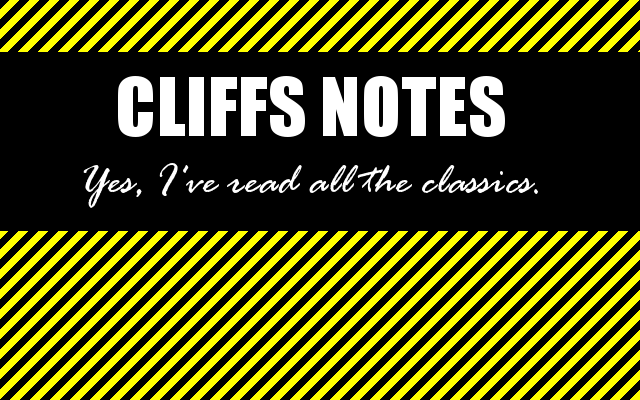Cliffs Notes are the yellow and black study guide that helped us understand wondrous and complicated pieces of world literature. Want to know what the heck Shakespeare was talking about in Othello? Then Cliffs Notes was the thing you turned to if you wanted a chance at passing that test. But who or what is the “Cliff” in Cliffs Notes?
There really is a person behind the start of Cliffs Notes, even though on some versions of the book there was a mountain on the cover. The man behind the study guides was from Nebraska, and his name was Cliff Hillegass. After graduating from college, he worked at Long’s College Bookstore, and he made some contacts while employed there.
One of his new contacts gave him the idea to publish Cliffs Notes. His name was Jack Cole, a man who ran a business called Coles, The Book People. Coles made study guides that were published in Canada called Cole’s Notes. Cole suggested that Hillegass should make book study guides specifically for U.S. students.
Cliff Hillegass took the idea and ran with it in August of 1958. He made study guides for sixteen of Shakespeare’s works from his home in Lincoln, Nebraska, and started the new business with $4,000. He sold each new guide for one dollar.
From there, things just grew and grew. Most likely, many of us have used the guides to get the background on any number of works at one point in our lives. And since there have been hundreds of titles published by Cliffs Notes, it’s safe to say that a majority of the classics (and not so classic) have been covered. Today their guides include everything from test preps to books on math, science, and writing skills, as well as the classic guides on different, almost incomprehensible, works of literature.
Houghton Mifflin Harcourt purchased Cliffs Notes in 2012 and continues to expand the line of products. Cliff Hillegass passed away at the age of 83 in 2001.
More Fun Facts About Cliffs Notes:
Cliffs Notes published a series of books called the “Bluffer’s Guides.” Topics included things other than literature such as wine and baseball, as well as bluffing. It was a way to sound like an expert without actually being one.
Cliffs Notes has been known as Cliffs Notes, Cliff’s Notes, and currently CliffsNotes, but erroneously as Cliff Notes. How many times have you called it that?
When the 1960s got into full swing, Cliffs Notes found their sales plummeting. Students didn’t need titles such as War and Peace, and the Divine Comedy by Dante, as required reading for their classes. Cliffs Notes had to keep up with the changing times and quickly released new titles, such as One Flew Over the Cuckoo’s Nest, and The Autobiography of Malcolm X.
In 1989 a judge sided with Cliffs Notes, Inc. when they sued a parody of their books called Spy Notes that was to be published by Spy Magazine. The reason for the suit was that the Spy Notes book used Cliffs Notes iconic yellow and black cover.
In 1997, Villanova University in Pennsylvania ordered its bookstores to stop stocking Cliffs Notes. The decision was made after 90 faculty members signed a petition to do so.
IDG Books Worldwide purchased Cliffs Notes Inc. in 1998. They’re the ones that make the “for dummies” books.
Sources: Cliffs Notes, The Tuscaloosa News, Park City Daily News, Toledo Blade, Eugene Register-Guard, Lakeland Register, Moscow-Pullman Daily News



